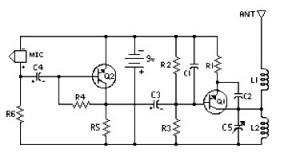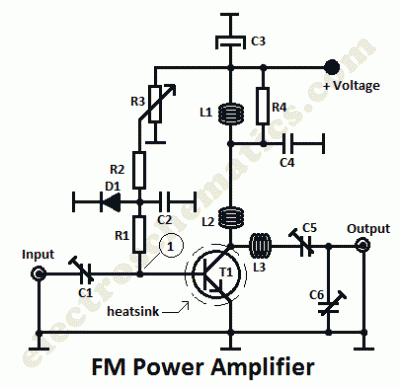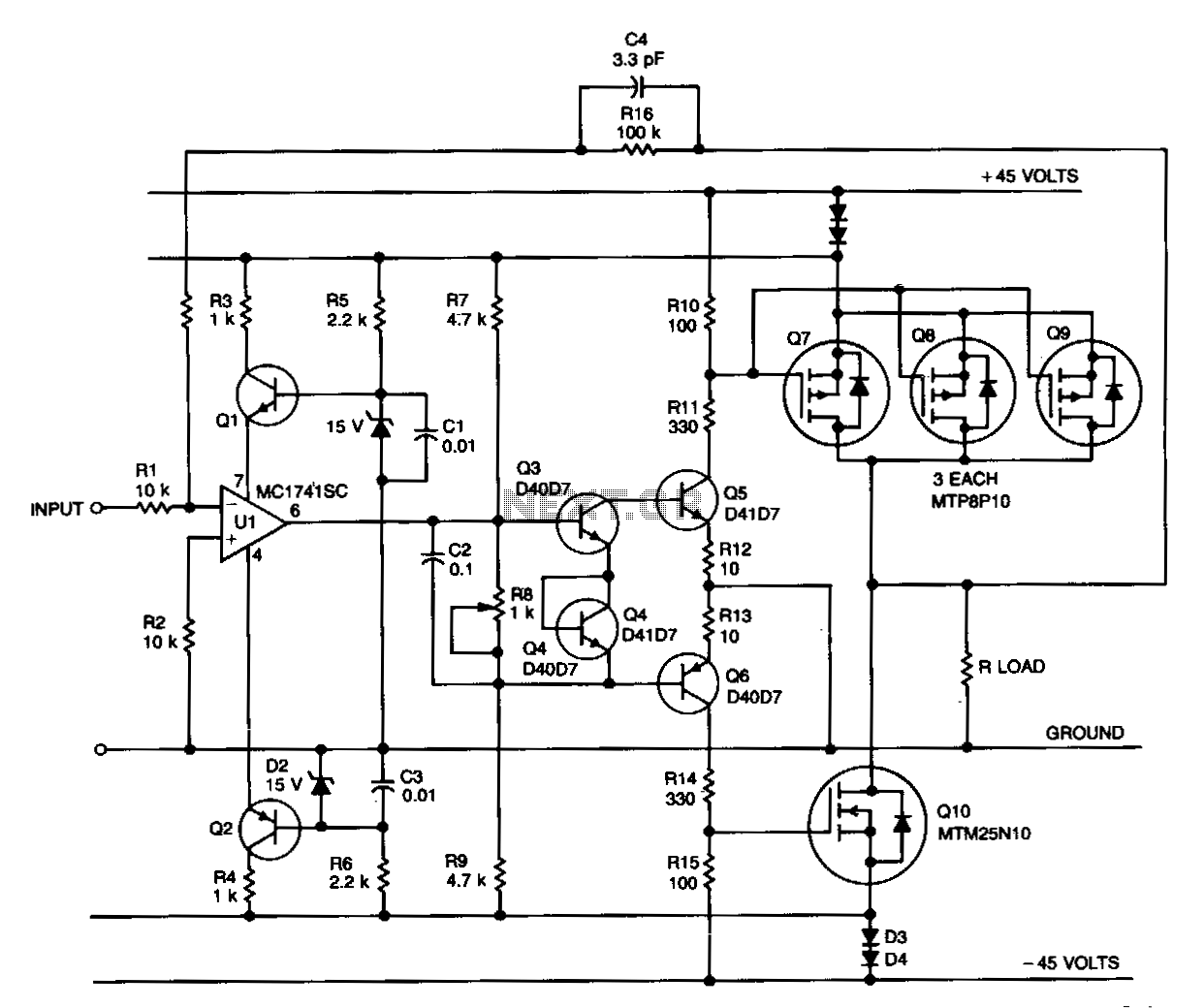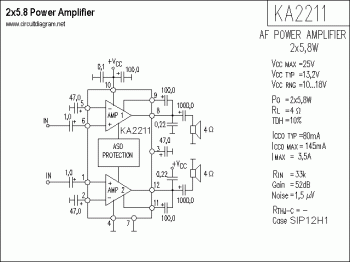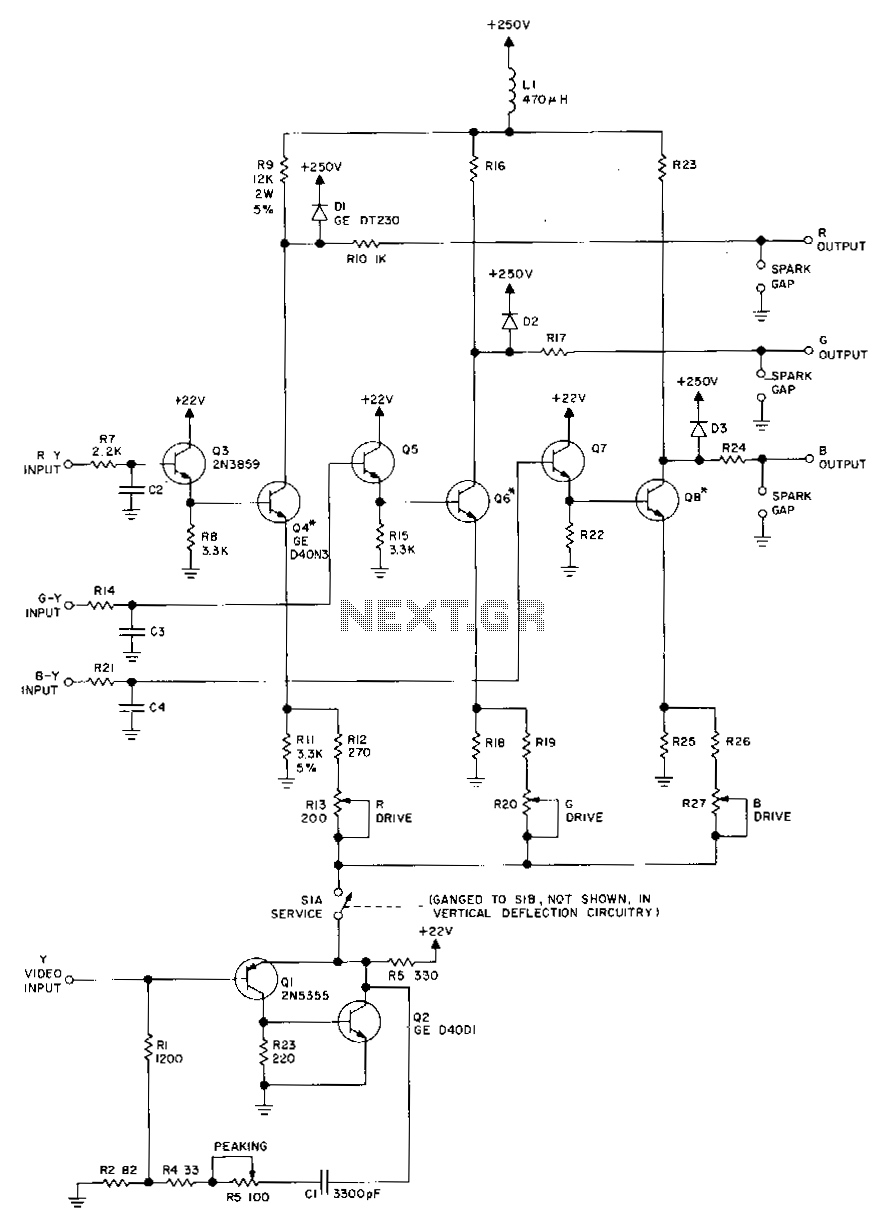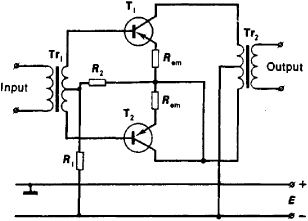
DC-coupled single-tube amplifier
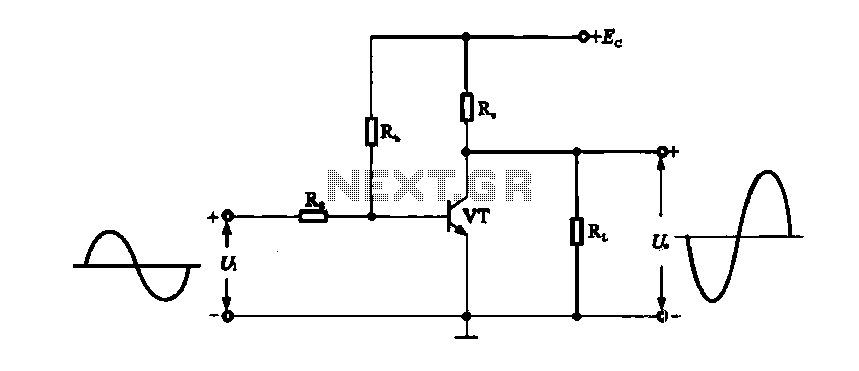
A DC-coupled single-tube amplifier is a circuit that utilizes a single transistor to amplify DC signals. This configuration primarily consists of a transistor, bias resistors, and minimal coupling capacitors. The absence of coupling capacitors allows the DC operating states of both the signal source and the load to interact directly. The circuit features a bias resistor that connects the power supply to the base of the transistor, ensuring proper operation. Additionally, a load resistor is connected to the collector of the transistor to facilitate power delivery, while a current-limiting resistor is employed to manage the input current to the transistor. The transistor functions to amplify the input signal.
The DC-coupled single-tube amplifier circuit operates by maintaining a direct current path from the input to the output, which is essential for amplifying low-frequency signals or DC signals without distortion. The transistor (VT) is the central component, where the input signal is applied to the base terminal. The biasing network, typically composed of resistors, sets the operating point of the transistor, allowing it to function in the active region for linear amplification.
In this configuration, the bias resistor (R shoulder) is crucial as it ensures that the transistor remains properly biased for optimal performance. The load resistor (RL) is designed to handle the amplified output signal, providing the necessary load for the collector of the transistor. The current-limiting resistor (Rs) is strategically placed between the signal source and the base of the transistor to protect the transistor from excessive input current, which could lead to saturation or damage.
The absence of coupling capacitors means that the amplifier can handle both AC and DC signals without introducing phase shifts or frequency response anomalies typically associated with capacitive coupling. This design is particularly beneficial in applications where fidelity in the reproduction of low-frequency signals is essential, such as in audio or instrumentation systems.
Overall, the DC-coupled single-tube amplifier is a simple yet effective circuit for amplifying signals, leveraging the properties of the transistor and a minimal component count to achieve reliable performance.DC-coupled single-tube amplifier (l) single-tube coupling the DC amplifier so-called single-tube DC-coupled amplifier circuit means only consist of a transistor, the basic comm on-emitter amplifier circuit compared to only a small two coupling capacitors C, and Q. In the absence of C., G DC blocking effect, and thus the signal source and the load on both the DC operating state generated shadow ring. Figure shows a DC-coupled single-tube amplifier, one of the key components of a transistor and a bias resistor.
Circuit bias resistor (R shoulder) through the power transistor to the base of operation: load resistor (where) through power to the transistor collector electrode power supply; a resistor (Rs) of the signal source is a current limiting resistor, to provide the appropriate input current of the transistor. Resistor (RL) is to put big clamor output signal load resistor. Function transistor (VT) of the base is an enlarged input signal.
The DC-coupled single-tube amplifier circuit operates by maintaining a direct current path from the input to the output, which is essential for amplifying low-frequency signals or DC signals without distortion. The transistor (VT) is the central component, where the input signal is applied to the base terminal. The biasing network, typically composed of resistors, sets the operating point of the transistor, allowing it to function in the active region for linear amplification.
In this configuration, the bias resistor (R shoulder) is crucial as it ensures that the transistor remains properly biased for optimal performance. The load resistor (RL) is designed to handle the amplified output signal, providing the necessary load for the collector of the transistor. The current-limiting resistor (Rs) is strategically placed between the signal source and the base of the transistor to protect the transistor from excessive input current, which could lead to saturation or damage.
The absence of coupling capacitors means that the amplifier can handle both AC and DC signals without introducing phase shifts or frequency response anomalies typically associated with capacitive coupling. This design is particularly beneficial in applications where fidelity in the reproduction of low-frequency signals is essential, such as in audio or instrumentation systems.
Overall, the DC-coupled single-tube amplifier is a simple yet effective circuit for amplifying signals, leveraging the properties of the transistor and a minimal component count to achieve reliable performance.DC-coupled single-tube amplifier (l) single-tube coupling the DC amplifier so-called single-tube DC-coupled amplifier circuit means only consist of a transistor, the basic comm on-emitter amplifier circuit compared to only a small two coupling capacitors C, and Q. In the absence of C., G DC blocking effect, and thus the signal source and the load on both the DC operating state generated shadow ring. Figure shows a DC-coupled single-tube amplifier, one of the key components of a transistor and a bias resistor.
Circuit bias resistor (R shoulder) through the power transistor to the base of operation: load resistor (where) through power to the transistor collector electrode power supply; a resistor (Rs) of the signal source is a current limiting resistor, to provide the appropriate input current of the transistor. Resistor (RL) is to put big clamor output signal load resistor. Function transistor (VT) of the base is an enlarged input signal.
